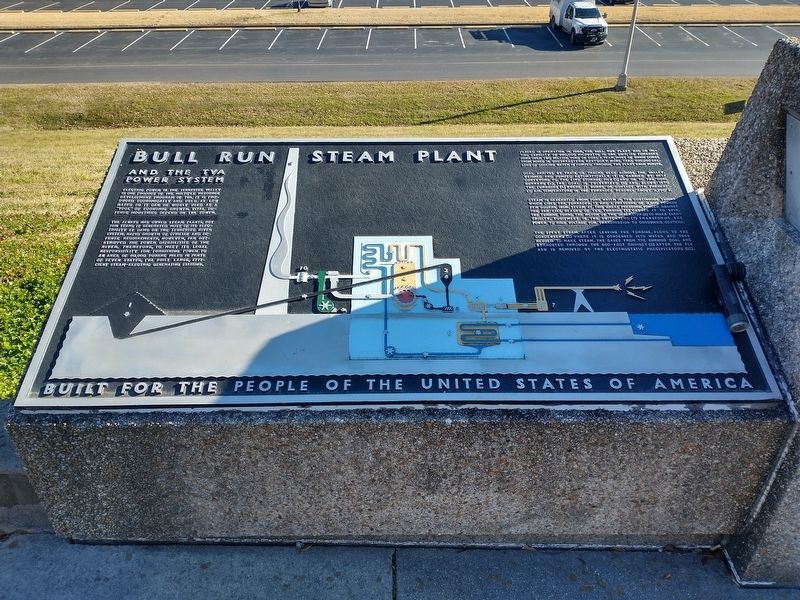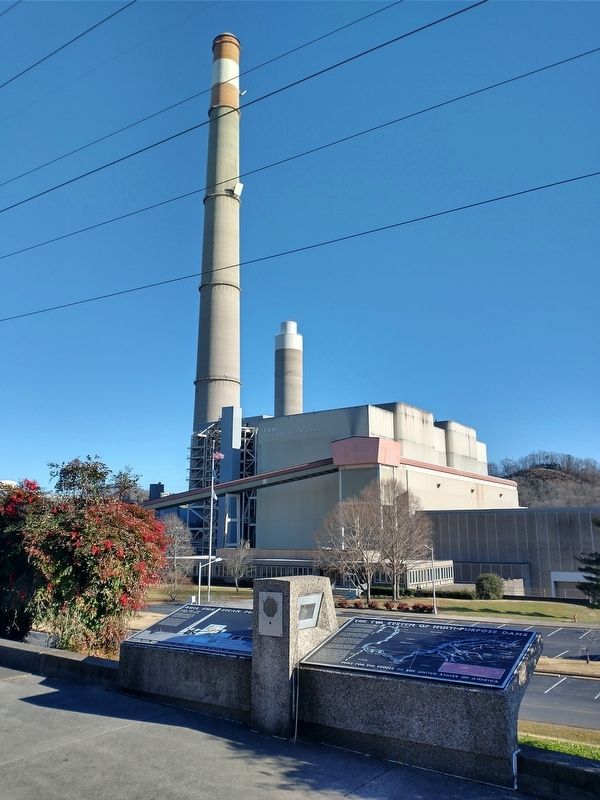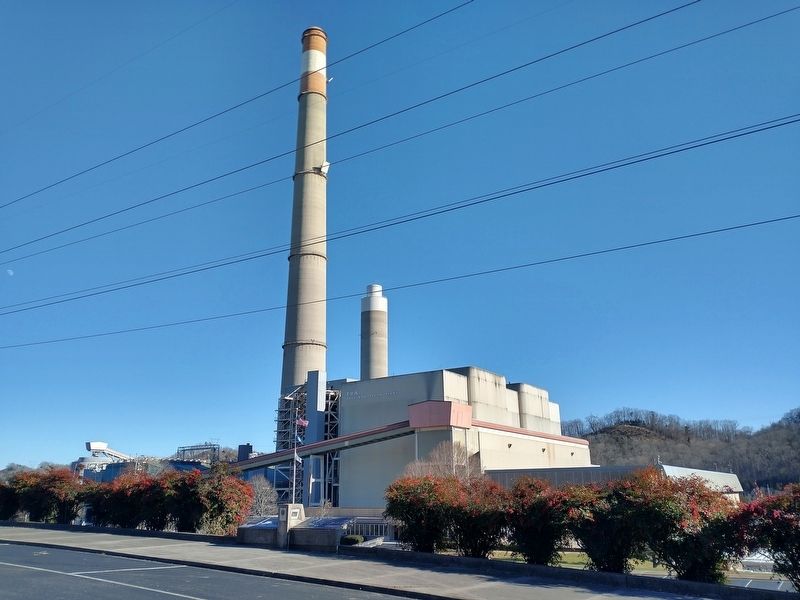Bull Run Steam Plant
And the TVA Power System
— Built For The People Of The United States Of America —
Electric power in the Tennessee Valley is one product of the Multiple Resource Development Program of TVA. It is produced economically and sold at low rates so it can be widely used as a “tool” of economic growth. Vital defense industries depend on TVA power.
TVA always has owned steam plants, but for years it generated most of its electricity at dams on the Tennessee River System. Rapid growth of civilian and defense requirements, however, far outstripped the power capabilities of the river. Therefore, to meet its legal responsibility for furnishing power to an area of 80,000 square miles in parts of seven states, TVA built large, efficient steam-electric generating stations.
Placed in operation in 1966, the Bull Run Plant has an initial capacity of 950,000 kilowatts in one unit. Its furnaces burn over two million tons of coal a year, most of which comes from mines in Southeastern Kentucky. More than 400,000 gallons of cooling water is pumped through the plant each minute.
Coal arrives by train on tracks seen across the valley, weighed and dumped automatically, it is carried by belt conveyors to the live storage pile (1) and on to the coal bunkers (2). The coal is pulverized (3) and blown into the furnaces (4) where it burns on contact with preheated air. Temperature in the furnace reaches about 2,750°
F.Steam is generated from pure water in the continuous tubing which lines the furnaces. It has a pressure of 3,500 pounds per square inch. Steam at this great pressure, forced against the fan-like blades of the turbine (5), causes it to spin. The turbine turns the rotor of the generators (6) to make electricity. Equipment in the switchyard (7) transforms the power to high voltage for transmission to consuming centers.
The spent steam, after leaving the turbine, flows to the condensers (8) where it is condensed into water and then reused to make steam. The gases from the burning coal are exhausted through the 800-foot chimney (9) after the fly ash is removed by the electrostatic precipitators (10).
Erected by Tennessee Valley Authority.
Topics. This historical marker is listed in this topic list: Industry & Commerce. A significant historical year for this entry is 1966.
Location. 36° 1.293′ N, 84° 9.55′ W. Marker is in Clinton, Tennessee, in Anderson County. Marker is on Edgemoor Road (Tennessee Route 170) 0.1 miles east of Lakeview Circle, on the right when traveling east. Touch for map. Marker is at or near this postal address: 1348 Edgemoor Rd, Clinton TN 37716, United States of America. Touch for directions.
Other nearby markers. At least 8 other markers are within 5 miles of this marker, measured as the crow flies. The TVA System of Multi-Purpose Dams (here, next to this marker); David Hall Cabin (approx. 1.2
Credits. This page was last revised on February 1, 2021. It was originally submitted on January 31, 2021, by Tom Bosse of Jefferson City, Tennessee. This page has been viewed 416 times since then and 55 times this year. Photos: 1, 2, 3, 4. submitted on January 31, 2021, by Tom Bosse of Jefferson City, Tennessee. • Devry Becker Jones was the editor who published this page.



